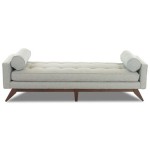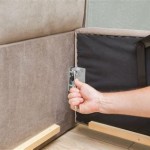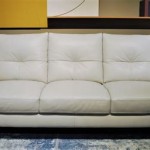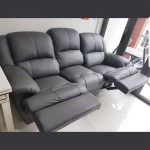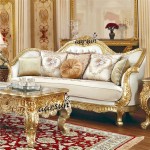Printed Sectional Sofas: A Comprehensive Guide
Sectional sofas have become a mainstay in modern living spaces, offering versatility, comfort, and ample seating. Beyond the basic configuration and fabric choice, printed sectional sofas provide an opportunity to introduce personality and style into a room. Printed sectional sofas encompass a wide range of designs, from bold geometric patterns to subtle floral motifs, enabling homeowners and designers to create unique and expressive environments.
Understanding the nuances of printed sectional sofas involves considering various factors, including the printing technique, fabric type, pattern scale, color palette, and overall aesthetic. This guide aims to provide a comprehensive overview of printed sectional sofas, covering their advantages, considerations for selection, and care recommendations.
Advantages of Printed Sectional Sofas
Printed sectional sofas offer a number of distinct advantages over solid-colored or uniformly textured options. These advantages span both aesthetic and practical benefits, making them a compelling choice for many living rooms.
One primary advantage is the ability to introduce visual interest and dynamism to a space. A well-chosen print can serve as a focal point, drawing the eye and creating a sense of depth. This is particularly beneficial in rooms with neutral walls or minimal architectural details. The print acts as a form of art, contributing to the overall ambiance of the room.
Furthermore, printed sectional sofas can effectively conceal minor stains and wear. A busy or intricate pattern can camouflage spills, crumbs, and other everyday mishaps, reducing the need for frequent cleaning or professional upholstery maintenance. This makes them a practical choice for households with children or pets, where spills are more likely to occur.
Printed fabrics also offer greater design flexibility. They can be used to tie together different elements in a room, such as curtains, rugs, and artwork. By selecting a print that incorporates colors and motifs found elsewhere in the space, one can create a cohesive and harmonious design scheme. This unifying effect can be difficult to achieve with solid-colored furniture alone.
Another significant advantage is the ability to reflect personal style. The vast array of available prints allows individuals to express their unique tastes and preferences. Whether one prefers a classic floral pattern, a modern geometric design, or an eclectic abstract motif, there is a printed sectional sofa to suit nearly every aesthetic.
Finally, printed sectional sofas can contribute to the perceived size and shape of a room. A large-scale print can make a small room feel larger, while a smaller, more intricate print can add a sense of intimacy to a larger space. The direction and placement of the print can also influence how the eye travels through the room, affecting the overall sense of spatial flow.
Factors to Consider When Selecting a Printed Sectional Sofa
Choosing the right printed sectional sofa requires careful consideration of several factors. These factors range from the technical aspects of the fabric and printing process to the aesthetic considerations of pattern, color, and style. A thoughtful selection process will ensure that the chosen sofa is both visually appealing and functionally suitable for the intended space.
The type of fabric used for the sofa is paramount. Natural fibers, such as cotton and linen, offer breathability and a soft texture, but they may be more susceptible to staining and wear. Synthetic fibers, such as polyester and microfiber, are typically more durable and stain-resistant, but they may lack the same level of comfort. A blend of natural and synthetic fibers can offer a balance of both qualities. The weave of the fabric also influences its durability and texture; tighter weaves tend to be more resilient.
The printing technique employed to create the pattern is another critical consideration. Direct printing involves applying the dye directly to the fabric, resulting in a vibrant and long-lasting print. However, this method may be more expensive than other options. Screen printing is a more cost-effective technique, but the print may be less durable and prone to fading over time. Digital printing offers the greatest flexibility in terms of color and detail, but it may not be suitable for all fabric types. The choice of printing technique will depend on the desired quality, durability, and budget.
The scale of the print should be proportionate to the size of the sofa and the room. A large-scale print can overwhelm a small room, while a small-scale print may get lost on a large sectional. Consider the overall visual impact of the print and how it will interact with other elements in the space.
The color palette of the print should complement the existing décor. Consider the colors of the walls, flooring, curtains, and other furniture pieces. Choose a print that incorporates colors that are already present in the room or that provide a pleasing contrast. Avoid selecting colors that clash or compete with each other.
The style of the print should align with the overall aesthetic of the room. A traditional room may benefit from a classic floral or damask pattern, while a modern room may be better suited to a geometric or abstract design. Consider the architectural style of the home and the existing furniture pieces when selecting a print.
The comfort and support provided by the sofa are also important considerations. Examine the cushioning, frame construction, and overall design of the sofa to ensure that it meets your needs for comfort and longevity. The depth of the seats, the height of the backrests, and the firmness of the cushions all contribute to the overall comfort of the sofa.
Finally, consider the maintenance requirements of the fabric and print. Some fabrics may require professional cleaning, while others can be spot-cleaned with mild soap and water. Check the manufacturer's instructions for specific cleaning recommendations. Regularly vacuuming the sofa can help to prevent dust and dirt from accumulating in the fibers, prolonging the life of the print.
Care and Maintenance of Printed Sectional Sofas
Proper care and maintenance are essential for preserving the beauty and longevity of printed sectional sofas. Regular cleaning and preventative measures can help to protect the fabric and print from damage, ensuring that the sofa remains a cherished piece of furniture for years to come.
Regular vacuuming is the first line of defense against dirt and dust. Use a vacuum cleaner with an upholstery attachment to remove loose particles from the surface of the sofa. Pay particular attention to crevices and seams, where dirt tends to accumulate. Vacuum the sofa at least once a week, or more frequently if you have pets or small children.
Spot cleaning is necessary to address spills and stains as quickly as possible. Blot the stain with a clean, absorbent cloth to remove excess liquid. Avoid rubbing the stain, as this can spread it and damage the fabric. Use a mild detergent and water solution to gently clean the affected area. Test the solution on an inconspicuous area of the sofa first to ensure that it does not cause discoloration. Rinse the area with clean water and blot dry.
For more stubborn stains, consider using a commercial upholstery cleaner. Follow the manufacturer's instructions carefully and test the cleaner on an inconspicuous area of the sofa before applying it to the stain. Avoid using harsh chemicals or solvents, as these can damage the fabric and print.
Professional cleaning is recommended for deep cleaning and stain removal. A professional upholstery cleaner has the experience and equipment to safely and effectively clean printed sectional sofas. They can also provide specialized treatments to protect the fabric from future stains and damage. Schedule a professional cleaning at least once a year, or more frequently if the sofa is heavily used.
Protecting the sofa from direct sunlight can help to prevent fading. Sunlight can cause the colors in the print to fade over time, particularly on darker fabrics. Position the sofa away from direct sunlight or use curtains or blinds to block out the sun's rays.
Rotating the cushions regularly can help to distribute wear evenly. This will prevent certain areas of the cushions from becoming flattened or worn out. Rotate the cushions at least once a month to ensure that they maintain their shape and comfort.
Avoid placing heavy objects on the sofa, as this can cause the cushions to become compressed and lose their shape. Refrain from using the sofa as a workspace, as this can increase the risk of spills and stains. Be mindful of sharp objects, such as keys or pens, which can snag or tear the fabric.
By following these care and maintenance guidelines, one can extend the life of a printed sectional sofa and ensure that it remains a beautiful and functional piece of furniture for many years.

L Shaped Sectional Floral Print Couch Covers Cover Sofa

Modern Rustic Floral Print Fabric Sectional Sofa Set Furniture My Aashis

Vintage 70s Milo Baughman For Thayer Coggin Printed Sectional Sofa At 1stdibs Sofas

10 Dreamy Ways To Style A Sectional Sofa Daily Dream Decor

Sectional Sofa Cover 2 Piece Stretch 3 Seat L Shape Couch Slipcovers Elastic Printed Furniture Protector For Living Room With 4pcs Pillow Covers White Leopard Com

Elastic Printed Sofa Cover Stretch Universal Sectional Corner Euro Covers For Sofas Couch

Deluxe Couch Cover Floral Printing Sofa Slipcovers For Crfatop

Modular Sofas Sectional Soho Home

High Quality Elastic Sofa Cover Stretch Recliner Slipcover 3 5 7 Printed Sectional Seat Covers China Furniture Made In Com

Designer Sofa Set Modern Art Antique 4 Seaters Sectional Sky B Gkw Retail
Related Posts

